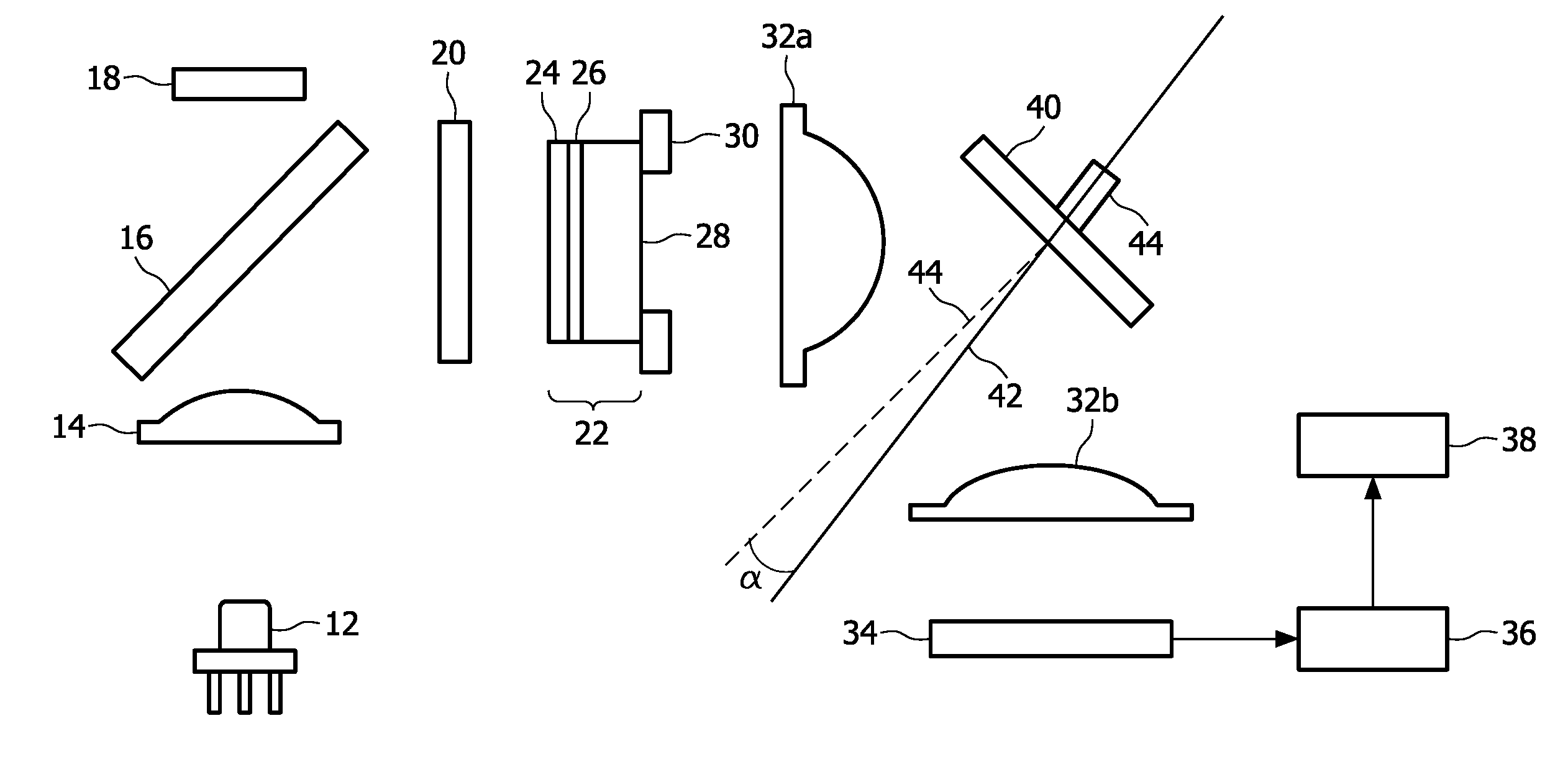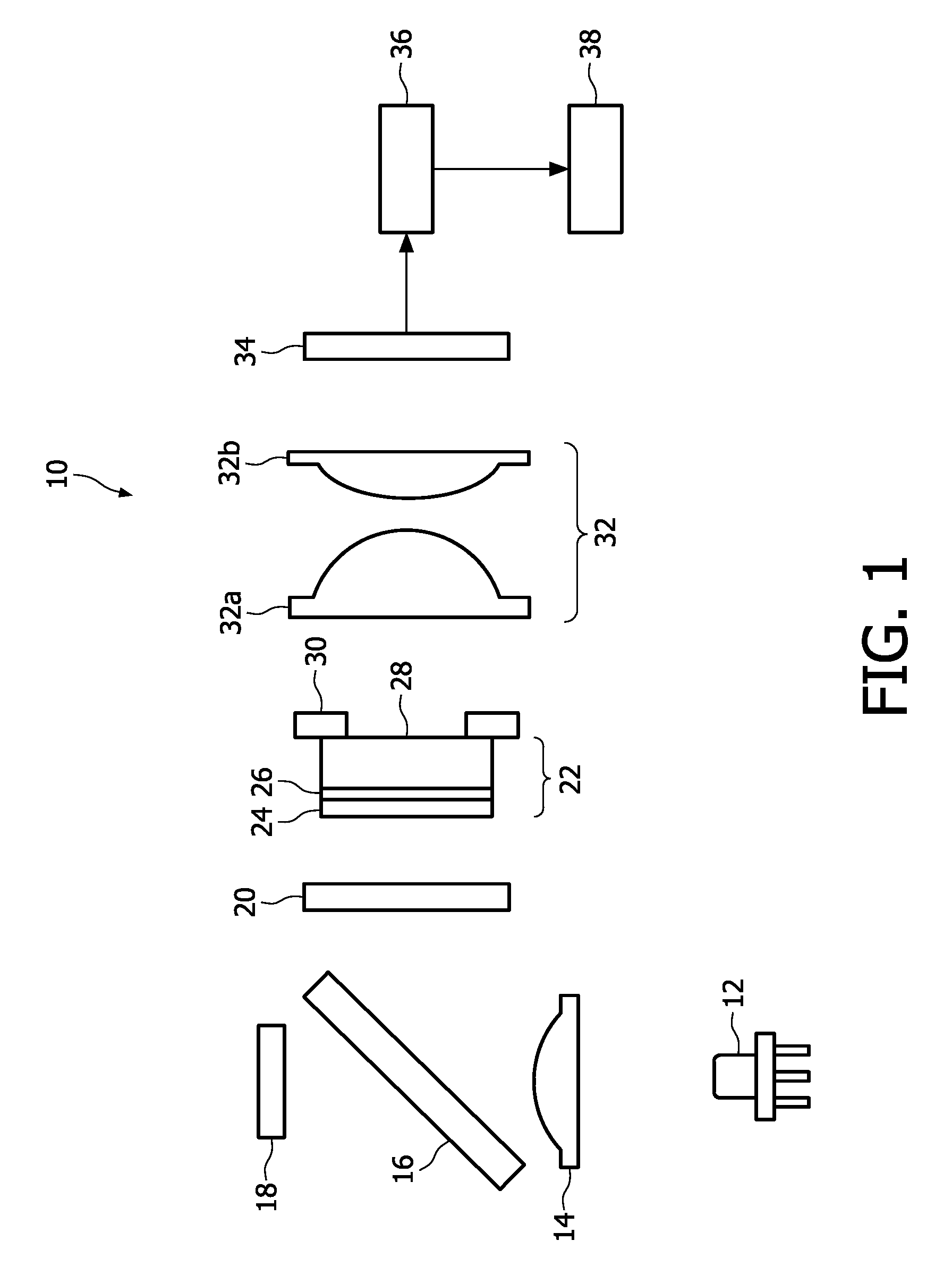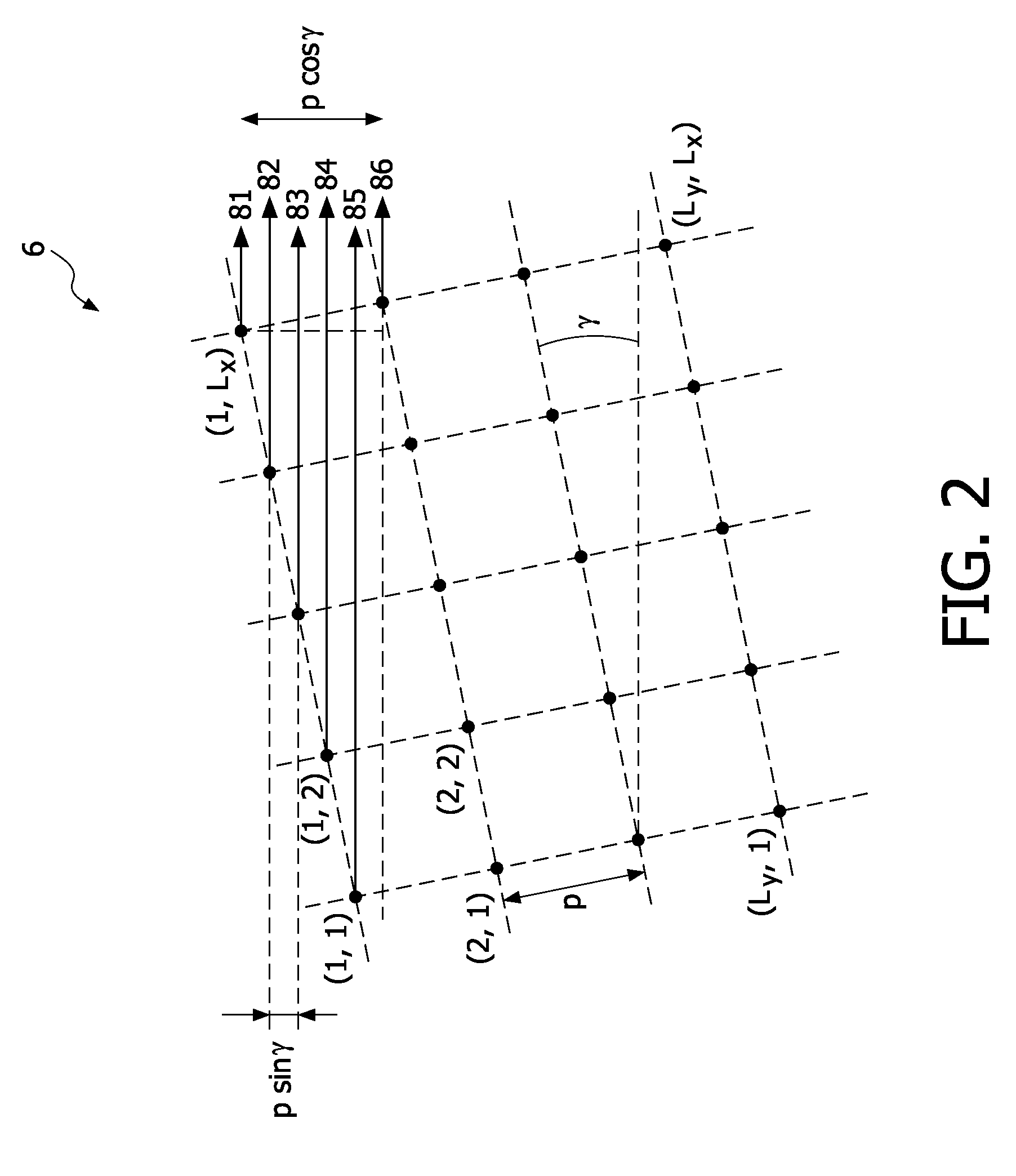Scanning microscope and method of imaging a sample
a scanning microscope and sample technology, applied in the direction of discharge tube/lamp details, instruments, optical elements, etc., can solve the problems of loss of resolution along the scanning direction, unfavorable sample assembly, and difficulty in implementing non-uniform speed, so as to increase the throughput of scanning microscope and reduce motion blur
- Summary
- Abstract
- Description
- Claims
- Application Information
AI Technical Summary
Benefits of technology
Problems solved by technology
Method used
Image
Examples
Embodiment Construction
[0043]In the drawings, similar or analogous features appearing in different figures are designated using the same reference numerals and are not necessarily described more than once.
[0044]FIG. 1 schematically illustrates a prior art multispot scanning microscope. The microscope comprises a laser 12, a collimator lens 14, a beam splitter 16, a forward-sense photodetector 18, a spot generator 20, a sample assembly 22, a scan stage 30, imaging optics 32, a pixelated photodetector 34, a video processing integrated circuit (IC) 36, and a personal computer (PC) 38. The sample assembly 22 is composed of a cover slip 24, a sample layer 26, and a microscope slide 28. The sample assembly 22 is placed on the scan stage 30 coupled to an electric motor (not shown). The imaging optics 32 is composed of a first objective lens 32a and a second lens 32b for making the optical image. The objective lenses 32a and 32b may be composite objective lenses. The laser 12 emits a light beam that is collimated...
PUM
 Login to View More
Login to View More Abstract
Description
Claims
Application Information
 Login to View More
Login to View More - R&D
- Intellectual Property
- Life Sciences
- Materials
- Tech Scout
- Unparalleled Data Quality
- Higher Quality Content
- 60% Fewer Hallucinations
Browse by: Latest US Patents, China's latest patents, Technical Efficacy Thesaurus, Application Domain, Technology Topic, Popular Technical Reports.
© 2025 PatSnap. All rights reserved.Legal|Privacy policy|Modern Slavery Act Transparency Statement|Sitemap|About US| Contact US: help@patsnap.com



